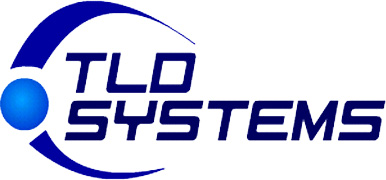What Is This Code? When Is It Used? Is it Appropriate to be used in Podiatry?
The care you provide for your patients is complex and comprehensive. G2211 will help you get paid more accurately for it. Starting January 1, 2024, you are able to use this add-on code alongside office/outpatient evaluation and management (E/M) codes to receive additional payment for the high value visits you provide.
What is G2211?
Healthcare Common Procedure Coding System (HCPCS) add-on code G2211 reflects the time, intensity, and practice expense resources involved when physicians provide office/outpatient visits that build longitudinal relationships with patients and address the majority of a patient’s health care needs with consistency and continuity over longer periods of time.
The Centers for Medicare & Medicaid Services (CMS) created code G2211 to better account for the resource costs associated with visit complexity inherent to primary care and other longitudinal care.
Visit complexity inherent to evaluation and management associated with medical care services that serve as the continuing focal point for all needed health care services and/or with medical care services that are part of ongoing care related to a patient’s single, serious condition or a complex condition. (Add-on code, list separately in addition to office/outpatient evaluation and management visit, new or established)
When to use G2211:
- HCPCS code G2211 was payable starting January 1, 2024.
- G2211 is an add-on code that may be reported with new and established patient office/outpatient evaluation and management (E/M) services.
- Use the add-on code when you are the continuing focal point for all health care services the patient needs.
- Per CMS, the relationship between the patient and the physician is the determining factor of when the add-on code should be billed.
Do not use G2211 when:
- Your relationship with the patient is of a discrete, routine, or time-limited nature. For example, a physician who sees a patient for an acute concern should not report HCPCS G2211 if they have not also assumed responsibility for the patient’s ongoing medical care or do not plan to take responsibility for subsequent, ongoing medical care with consistency and continuity over time.
- The associated office visit E/M is reported with modifier 25 appended when a minor procedure CPT code is billed on the same date of service.
Do private payers pay for G2211?
- Private payers are not required to cover and pay separately for G2211, and their policies will vary. The AAFP (American Academy of Family Physicians) encourages you to review your contracts and speak with your provider relations representatives about adding G2211 to your fee schedule.
- The AAFP is strongly advocating that private payers cover and pay for G2211 across all lines of business.
- Additional information regarding the AAFP’s advocacy efforts can be found on the Decoding G2211: Myths Versus Facts webpage.
Medicare payment amount for G2211: The average Medicare reimbursement for G2211 is approximately 16.00 based upon the reimbursement allowed by the Medicare Administrative Contractor.
So, the big question is, “Is the reimbursement worth the extra effort?
Can a podiatrist bill G2211?
G2211, an add-on code for office and outpatient Evaluation and Management (E/M) services, is intended for visits that are inherently more complex due to the longitudinal relationship between the practitioner and the patient. A podiatrist can appropriately use this code in the following situations:
- Ongoing care for a single, serious, or complex condition. Many conditions specific to podiatry, such as diabetic neuropathy, chronic degenerative joint disease, Charcot neuroarthropathy, Complex Regional Pain Syndrome, Osteomyelitis, PVD with Gangrene, require long-term management. If the podiatrist provides continuous and active care for such a condition, they can bill G2211.
- Documentation supports a longitudinal relationship. The medical record must clearly demonstrate that YOU have taken or intend to take responsibility for the patient’s ongoing care for a specific condition. This indicates a relationship beyond a single, routine, or time-limited visit.
Billing Requirements and Considerations:
Must be billed with an E/M code: G2211 is an add-on code and must be billed alongside an office or outpatient E/M visit (CPT codes 99202–99215).
Documentation: While G2211 does not require a specific diagnosis, your documentation for the underlying E/M visit must show that the service was medically necessary. The note should also highlight the longitudinal relationship or ongoing complexity that justifies using G2211.
Restrictions (Modifier 25): The code generally cannot be used when the E/M service is billed with modifier 25 (significant, separately identifiable service on the same day). There is an exception for Medicare Annual Wellness Visits and other preventive Part B services, where G2211 can be billed along with an E/M service with modifier 25 as of 2025.
Private payers: G2211 is primarily a Medicare code, and coverage by other payers (e.g., commercial insurance) is not guaranteed and can vary.
Not for routine or acute issues: The code is not appropriate for isolated, acute, or routine care. For example, it would not be billed for a single visit to treat a simple foot fracture if no further ongoing management is established.
This is my opinion.
Michael G. Warshaw, DPM, CPC
THE 2025 PODIATRY CODING MANUAL IS STILL AVAILABLE in either Book or Flash-drive formats. It has been completely updated for the calendar year 2025. Many offices across the country consider this to be their “Bible” when it comes to coding, billing, and documentation. The price is still only 125.00 including shipping! To purchase, access the website drmikethecoder.com.
No credit card? No problem! Just send a check for 125.00 to the following address:
Dr. Michael G. Warshaw
2027 Bayside Avenue
Mount Dora, Florida 32757



Read Comments